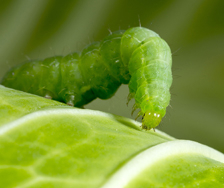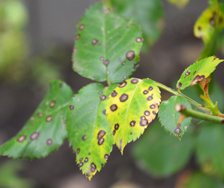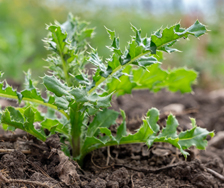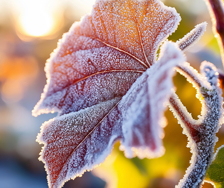Yates Account
Join now
Create a Yates account today!
Sign up to join the Yates Garden Club for monthly e-mails packed with seasonal inspiration, tips for success & exclusive promotions.
Plus if you’re a Garden Club member you can take part in the Yates Growing Community - a blog to share successes, get advice & win prizes in fun challenges along the way!

Forgot password
Enter the email address associated with your account, and we'll email you a new password.

After a flood, the health of the garden probably doesn’t rank highly in most people’s priority list! However, a few timely actions will vastly improve your garden’s prospects for recovery.
The initial impact of flooding on the landscape is obvious - with broken branches, defoliated plants, soil loss, debris and sediment everywhere – but the long-term damage may take a while to become visible.
Even temporary flooding has potential to cause significant damage to the soil and plant roots. When soil gets flooded, oxygen – essential for root respiration and soil microbes – is quickly eliminated from the soil. As little as 24 hours underwater can compromise the health of the roots as well as the plants themselves. Some plants are more tolerant of waterlogged conditions than others; most landscape plants can survive being submerged for a week or so. Even so, the resulting root damage can make them susceptible to a range of pests and diseases. It also decreases their tolerance to other environmental stresses, like high temperatures and drought conditions later on. Also, a heavy accumulation of sediment or soil can be as just damaging as being submerged in standing water, because it stops precious oxygen getting to the roots.

Garden Recovery
The first step in post-flood garden recovery is to allow the soil to drain naturally. Working with wet soil can cause long-term damage to soil structure, through compaction. This is a particular problem with heavier soils, which compact more easily. Heavy clay soils will take several days to dry out to the point where gardening can start. Before beginning any work, make sure you’re wearing gloves, strong footwear and appropriate clothing to protect yourself from contaminated soil and sharp debris. If plant foliage and stems are heavily silted or covered in debris, it's advisable to hose them off gently, taking care not to add too much water to the already sodden conditions. Mud or silt can also be very gently scraped off plants. Silt covered leaves will affect the plant’s ability to function properly.

Lawn Recovery
Floods can do a lot of damage to your lawn, but under most conditions lawns can survive up to four days of submersion. Try not to walk on waterlogged lawns, because they're very prone to compaction. The first step in recovering your lawn is to carefully remove any debris (glass, metal, stones etc.) that have accumulated on the lawn, especially any bare-feet safety hazards. Ensure you wear strong gloves, sturdy footwear and long-sleeves to avoid cuts and scratches (and soil-borne diseases, like tetanus).
The other key consideration besides compaction is the impact of accumulated silt, soil sediment and organic debris. Usually this accumulated material should be pretty manageable and easy to deal with, but larger deposits are a bigger issue. For lawns with less than 20mm of sediment, rake it evenly across the grass surface with a steel rake. This provides the lawn with a useful layer of topdressing. This layer can crust over and prevent air movement, so it's essential to keep it loose and well-aerated by raking it regularly. Don't drag the rake too deeply, as this can damage the underlying grass.
Lawns that have more than 20mm of sediment have less chance of recovery. However, if excess silt is removed quickly and you keep the surface crusting well-aerated it still has a fighting chance! If the lawn doesn't show signs of regeneration within a few weeks, then it's time to consider re-establishing the lawn. Before you start, it's critical that the dead layer of lawn below is thoroughly broken up and incorporated into the surrounding soil, otherwise it acts as a barrier to new root growth, limiting air and water movement. Establishing a new lawn quickly guards against soil loss from downpours. Read our detailed information on establishing new lawns from seed.
Lawns will also greatly benefit from a feed following a flood, helping to replace any lost nutrients and aiding in their rapid regeneration. Yates Dynamic Lifter Concentrated Lawn Food is an organic based lawn fertiliser that contains fast acting nutrients to encourage deep green lawn growth as well as rich organic matter to promote soil health.
The stress and damage caused by flooding may also predispose your lawn to disease. Consult the Yates lawn problem page which has pictures of various lawn diseases to help you identify the potential problems. You may also find that weeds, springing up from seeds transported in the floods, can establish themselves in your lawn. However, it's best to delay controlling weeds until the lawn isn't so stressed and has begun to regrow. Common broadleaf weeds can be controlled with selective herbicides, like hose-on Yates Weed’n’Feed.

Flood Affected Fruit & Vegetables
Edible vegies in your garden that have come in contact with flood water might be contaminated. It's incredibly disappointing, but it's wise to dump affected vegies, to be certain they aren't polluted. Vegetable gardens can take at least a month to become suitable for harvesting after a flood, especially if the flood causes a sewage discharge. Throw away all leafy green vegies, damaged vine fruits or dropped tree fruits - anything that's been dunked in the flood water. After 1 month, other types of vegetables can be washed, then sanitised in a weak bleach solution of 1 tablespoons bleach to 2 litres of water. After that, rinse in drinking-quality water, peel and use.
Monitor announcements and consult local authorities for advice about local contamination after flood events. Remember: "if in doubt, throw it out!”
Read the Ministry of Primary Industries emergency food safety guidelines here.

Mosquitoes
To prevent mosquitoes breeding and coming into your house, it’s important to remove all sources of standing water from your garden. Empty out water features, pot saucers, waterlogged rubbish and other receptacles and try to promote water to drain from your property.













Share
Share this article on social media